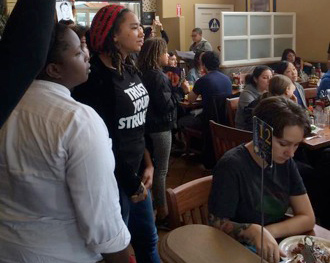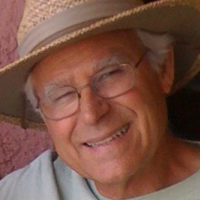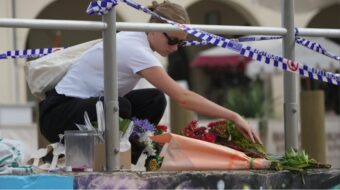
During the recent holidays, my wife Susan and I managed to make it to a couple of public demonstrations for justice. In between the various gatherings with friends and religious observations, we also attended a pair of arts events. One was a theater piece focused on the historic Central Avenue of early African-American Los Angeles. The other was a post-modern, experimental movement set, produced by our friend Suchi, who teaches dance at Scripps College in Claremont.
Yes, we celebrated the holiday festivals with religious experiences, friends, activism, and art. You would expect religion and friends from a minister, of course, and maybe political actions – but art?
I believe that aesthetic experiences carry the power to sustain activists. The classic periods of social upheaval almost always come with parallel movements in the arts. In my lifetime, the rise of the United Farm Workers union brought El Teatro Campesino – the agitprop crew who mirrored back to the farm workers the conditions of their work and the oppressive practices of their bosses. The civil rights movement was accompanied by music – not only by well-known performers but by the people on the picket lines themselves. Urban activism in that era often came with theater based in many areas of the country, such as the San Francisco Mime Troupe or the Company Theater in Los Angeles – even internationally with troupes like the Living Theater.
These experiences sustained our social change work by giving us a reflection of ourselves and our efforts, providing inspiration and self-evaluation. They did then, they still do. As Suchi puts it, “Art [is] sustenance for the long struggle that we are waging for justice, racial equality, fairness. I see the performance very much as a moment to cry, grieve, mourn and reflect on what gives us strength. I hope you feel that way from the performance….”
No wonder, then, that at Suchi’s dance concert, I first learned about #Black Brunch, a group of Oakland and New York artists and activists who file into cafés on Sunday mornings in chic parts of the Bay Area and Manhattan, where they announce the names of black youth killed by white police officers, inviting the diners to join them by calling out “ashe” [pronounced ah-SHAY] meaning “amen” or “so be it” after the reading of each victim’s name and age. Simple. Straight-forward. Respectful. Then they leave.
Activism like that takes courage and wisdom. It emerges out of deep places in the human spirit, the interior felt-life experience expressed by the arts and also by religion. The symbols and the stories of faith traditions contain motivation for persevering in the work of justice. All religions believe in justice, we like to say, but also in hope. In the religious way of thinking, hope is an ontological strand of belief. It affirms that the “arc of the universe bends toward justice,” as Martin Luther King, Jr., liked to quote. Hope means that we believe justice is built into the fabric of the cosmos itself. Our work is to participate in that “finishing of creation,” as some of the creeds put it.
Whether or not we consider ourselves religious, or make it a point to set aside time for perspective-changing art experiences, as activists we must find ways that sustain us. Albert Camus, the French writer who lived as part of the Resistance under fascism, wrote about the motivation for a life of advocacy against injustice. For Camus each person must identify their own role within their view of the world. He offered a life lived against the grain as a grounding sense of meaning for one’s self.
“I rebel, therefore, I am,” was the mantra from one of his book-long essays. We find meaning and define our life’s purpose by holding out for justice in a world that seems not to care so much about it. Against that callous indifference, I am because I rebel.
I always think that Martin Luther King, Jr.’s Jan. 15 birthday, celebrated this year on the 19th, is a time for the nation and each of us to consider the values we will live out over the coming year. His holiday next week concludes the winter festivals with a call for clarity and action. It urges us to root those values in deep places in our culture and in our souls. Ashe.
Reprinted by permission of the author and Capital and Main.
Rev. Jim Conn is the founding minister of the Church in Ocean Park and served on the Santa Monica City Council and as that city’s mayor. He helped found Clergy and Laity United for Economic Justice, Los Angeles, and was its second chair, and was a founder of Santa Monica’s renter’s rights campaign.
Photo: #blackbrunch in Oakland | Sarah O’Neal










